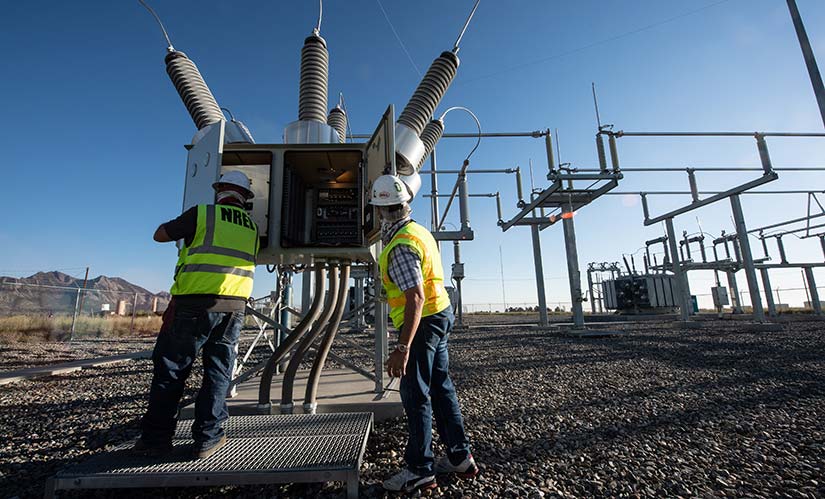Black Start
NLR is investigating options for black-start service, which is important to the safe, reliable, and resilient operation of electric power systems and a critical part of system restoration for power grids.

Black start is the ability of generation to restart parts of the power system to recover from a blackout. This entails isolated power stations being started individually and gradually reconnected to one another to form an interconnected system again. It is used when the grid experiences a blackout and must be restarted from scratch. As such, black start is a critical resource for maintaining the reliability and resilience of the electric power system and is central to system restoration and recovery plans for system operators.
In large power grids, black-start service comes from generators that can be started from an on-site auxiliary generator—without help from external power supplies. For example, a diesel generator may be started with a local battery. This is used to create an AC voltage waveform that other generation can synchronize to and start to generate additional power.
Microgrids can provide local reliability and resilience through local generation. Microgrids insulate local customers from the effects of outages on the larger grid and can be used to start a system from the bottom up. Microgrids that are connected to one another and the larger grid need to be able to switch to “island” mode seamlessly to insulate themselves during widespread disruptions such as blackouts and cyberattacks. As more distributed energy resources, energy storage, and microgrids are deployed in power systems, options for expanding system restoration beyond large-scale generation need to be considered. These assets will need black-start resource testing to ensure they can energize equipment to restore the system as intended in restoration plans.
NLR is also investigating how inverter-based resources can be used to start power grids. These inverters need to operate in a grid-forming mode that enables them to provide a reference AC waveform. This research focuses on black start of inductive loads because these loads are encountered during a black start of critical loads, such as natural gas compressors and auxiliary equipment of the next-start power plant, and they can result in large transient inrush currents, which typical inverters may find difficult to provide.
Publications
Investigating Multi-Microgrid Black Start Methods Using Grid-Forming Inverters, Preprint, 2023 IEEE Conference on Innovative Smart Grid Technologies North America (2023)
Resilient Inverter-Driven Black Start With Collective Parallel Grid-Forming Operation, Preprint, 2023 IEEE Innovative Smart Grid Technologies (2023)
A Review of Active Probing-Based System Identification Techniques With Applications in Power Systems, Journal of Electrical Power & Energy Systems (2022)
Autonomous Microgrid Restoration Using Grid-Forming Inverters and Smart Circuit Breakers, 2022 IEEE Power and Energy Society General Meeting (2022)
Paradigm Shift: Black Start From Inverter-Based Resources-IBR-Driven Power System Black Start, NLR Presentation (2022)
Blackstart of Power Grids With Inverter-Based Resources, NLR Presentation (2020)
Blackstart of Power Grids With Inverter-Based Resources, Preprint, 2020 IEEE Power and Energy Society General Meeting (2020)
Research Roadmap on Grid-Forming Inverters, NLR Technical Report (2020)
Bulk Power System Dynamics with Varying Levels of Synchronous Generators and Grid-Forming Power Inverters, Preprint, 46th IEEE Photovoltaic Specialists Conference (2019)
Integrated Synchronization Control of Grid-Forming Inverters for Smooth Microgrid Transition, NLR Poster (2019)
Contact
Share
Last Updated Dec. 7, 2025
